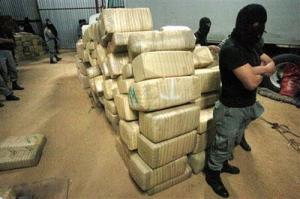The Mexican government may have scored a victory earlier this month with the arrest of Miguel Angel Trevino Morales, the leader of the violent and powerful Zetas drug trafficking organization, but nobody told the Knights Templar, another drug trafficking organization based in the western Mexican state of Michoacan. They have been involved in recent violence there that has left dozens dead, including a Mexican vice-admiral.

Last week, the Knights unleashed a wave of attacks on federal police in the state, resulting in the deaths of 20 cartel members and two federal police officers. Another 15 federal police officers were wounded. Those attacks took place last Tuesday, when the Interior Ministry reported that federal police around the state were subjected to "pre-planned" ambushes carried out by "individuals with large arms hidden in the hills."
"In all the cases, authorities repelled the aggressions to return order to the areas," the statement said.
Those attacks came just a day after a bloody clash in the Western Michoacan city of Los Reyes that pitted members of a local "self-defense" group against cartel gunmen. The self-defense group was marching to city hall to protest the presence of the Knights Templar when gunmen opened fire on them, killing five and wounding seven.
Rising violence in Michoacan in recent weeks and months has inspired both the formation of the local "self defense" groups and the insertion of thousands of federal soldiers and police into the state in May at the behest of Mexican President Enrique Pena Nieto. Local citizens complain that, in addition to their drug trafficking activities, the Knights have engaged in a broad campaign of extortion, rape, and murder of common citizens, while Pena Nieto views their presence as a threat to his efforts to turn attention away from the drug wars and to Mexico's economic development.
The violence did end with the Tuesday ambushes. Two days later, three more federal police were killed and six wounded in another ambush, this one near the state's southern border with Guerrero. The following days, the bodies of four people were found hanging at the entrance to El Limon de La Luna, where some of the worst clashes between the Knights and unhappy locals have taken place. Before the arrival of the military in May, dozens of people had died in clashes between the Knights and the "self-defense" groups.
On Sunday, the Knights Templar gunned down Vice Admiral Carlos Miguel Salazar, one of Mexico's highest ranking Navy officers, and a bodyguard. Salazar's vehicle was traveling on a main highway, but was forced to detour onto an unpaved road after pro-Knights demonstrators holding signs saying "Federales Out" blocked the highway.
The vice admiral did not appear to be deliberately targeted, but his marked vehicle became a target of opportunity once it was forced onto the back roads. On Monday, Mexican authorities announced they had arrested three Knights in the killings.
This work by StoptheDrugWar.org is licensed under Creative Commons Attribution-ShareAlike 4.0 International
Add new comment